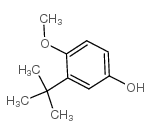The redox-sensitive human antioxidant responsive element induces gene expression under low oxygen conditions.
N S Waleh, J Calaoagan, B J Murphy, A M Knapp, R M Sutherland, K R Laderoute
文献索引:Carcinogenesis 19(8) , 1333-7, (1998)
全文:HTML全文
摘要
Transient transfection studies of human HepG2 and mouse Hepa hepatocarcinoma cells with a reporter gene construct regulated by a human antioxidant responsive element (ARE) from the NQO1 gene demonstrated that the element is responsive to low oxygen conditions. The antioxidant N-acetyl L-cysteine (NAC) strongly inhibited basal aerobic reporter gene activity in HepG2 cells without obviously affecting the hypoxic induction, as is consistent with ARE sensitivity to oxidative stress in aerobic cultures. Electrophoretic mobility shift (EMS) assays of nuclear extracts of HepG2 and Hepa cells lysed under aerobic or hypoxic conditions or after exposure to the phenolic compound 3-(2)-tert-butyl-4-hydroxyanisole (BHA), showed specific and constitutive protein binding to the ARE under all of these conditions. Taken together, these findings show that the ARE can mediate gene expression in response to low oxygen conditions. Co-ordinately regulated expression of ARE-dependent genes, such as phase II detoxification enzymes, may be an important phenotype of solid tumors containing significant regions of pathophysiological hypoxia.
相关化合物
| 结构式 | 名称/CAS号 | 分子式 | 全部文献 |
|---|---|---|---|
 |
2-叔丁基-4-羟基茴香醚
CAS:88-32-4 |
C11H16O2 |
|
Modulation by dietary factors of BHA-induced alterations in ...
1991-02-01 [Food Chem. Toxicol. 29(2) , 79-85, (1991)] |
|
Antioxidant properties of melatonin: a pulse radiolysis stud...
1999-03-01 [Free Radic. Biol. Med. 26(5-6) , 557-65, (1999)] |
|
Chemoprevention of cancer: phenolic antioxidants (BHT, BHA).
1988-01-01 [Int. J. Biochem. 20(7) , 639-51, (1988)] |
|
p38 mitogen-activated protein kinase negatively regulates th...
2000-01-28 [J. Biol. Chem. 275(4) , 2322-7, (2000)] |
|
Metabolism of 2- and 3-tert-butyl-4-hydroxyanisole (2- and 3...
1987-02-01 [Toxicology 43(2) , 139-47, (1987)] |